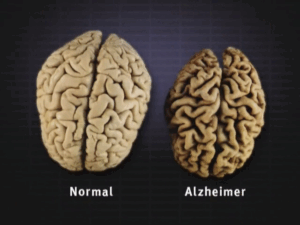The eight thinking arms of an octopus
When you think of intelligence in nature, you probably picture the brain: the body’s singular command center that makes decisions for the entire body. Octopuses flip that idea completely upside down. These sea creatures don’t rely on a single central brain like we do. Instead, most of their neurons (the cells that carry information) are spread throughout their arms. Each of the octopus’s eight tentacles act like mini brains, giving each arm the power to sense, move, and even solve challenging problems on its own.

An octopus’s arm isn’t just for physical tasks, it’s also a thinking and sensing extension of the body. Each arm is packed with neurons capable of processing information locally, so the limbs can explore on their own without having to repeatedly check in with the central brain (1). As a result, octopuses are capable of handling many tasks at once. For example, they can use one arm to search for food in a shell while another opens a clam — all while maneuvering through the ocean floor. As Scientific American explains, it’s like each arm has a “mind of its own” (2).
Recently, studies have shown just how unique this system really is. In a 2022 article published in Current Biology, scientists at the University of Chicago traced the nerve cords that run through young octopuses’ arms (3). They discovered that these nerves not only connect a single arm’s base to its tip, but also extend to the other arms. This was shocking to the scientists. Imagine if your right arm could communicate with your left foot without contacting your brain first. This unique ability to coordinate between distant arms contributes to the adaptability and the fluidity of the octopus.
However, this does not mean that octopuses can really think with their arms. At least, not in the human sense. Each arm can act with a kind of independence while still working as a part of the whole animal. However, this doesn’t mean that octopuses literally think with their arms – at least not in the way that humans think with our brains. Each arm can sense its surroundings, make basic movements, and coordinate actions such as grasping or exploring an object without requiring a central brain. The suckers on the tentacles can taste and feel textures, and the arm can decide on how to respond.

From an evolutionary standpoint, Octopuses are very distant from humans: our last shared ancestor lived over 600 million years ago. As such, both species developed their own unique ways of interacting with the world around them. For octopuses, intelligence does not come from a single centralized brain, but from eight curious arms that are constantly reaching, sensing, and thinking.
Sources:
- Kuuspalu, A., Cody, S., & Hale, M. E. (2022). Multiple nerve cords connect the arms of octopuses, providing alternative paths for inter-arm signaling. Current Biology, 32(24), 5415-5421.e3. https://doi.org/10.1016/j.cub.2022.11.007
- Bradford, N. (2023, March). How Octopus Arms Bypass the Brain. Scientific American. https://www.scientificamerican.com/article/how-octopus-arms-bypass-the-brain/
- Carls-Diamante, S. (2022). Where Is It Like to Be an Octopus? Frontiers in Systems Neuroscience, 16. https://doi.org/10.3389/fnsys.2022.840022
Images:
- https://www.facebook.com/Treehugger. (2017). Each Arm of an Octopus Has a Mind of Its Own. Treehugger. https://www.treehugger.com/for-octopus-each-arm-has-mind-nose-its-own-4863851
- https://studentorg.vanderbilt.edu/vsvs/2020/09/29/octopuses-8-arms-9-brains/






Comments are closed.